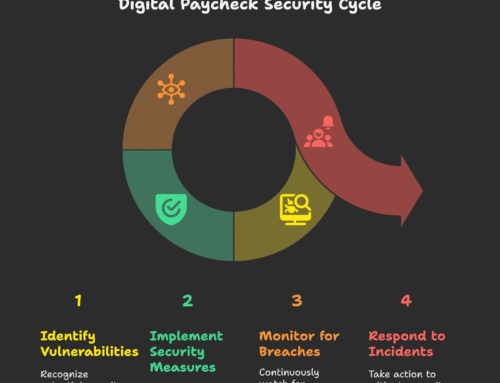There’s been a lot of media attention recently about the amount of sugar in breakfasts – breakfasts contain at least half of children’s recommended daily sugar intake according to Public Health England. The problem is, many adults are also eating those same breakfast cereals and putting the same topping on toast too – are we any better? We need to have energy to commute to work, mental clarity to make important decisions and meet deadlines. We certainly we can’t do this on poor food choice at the start to the day.
Breakfast is skipped by many people rushing to work, and for some people breakfast is an automatic process consuming the same breakfast each morning – partly because we don’t have the time to look at ingredient labels and select a healthier option. Manufacturers use a combination of sugar and clever marketing to keep enticing people back to their brands and often under the illusion that their breakfast products are healthy. A survey found that 84% of parents thought they were giving their children a healthy start to the day….
We know excess sugar can lead to weight gain, heart disease, and Diabetes. Government guidelines are to focus on the added/free sugar – which should be less than 5% of the energy (calories) you get from food per day (that’s 30g of added/free sugar or equivalent to seven teaspoons/sugar cubes). Worth bearing in mind when a can of fizzy drink can include up to 9 teaspoons of sugar!
The frustrating thing is if you do put in the effort to read food labels, it is still impossible to work out how much added/free sugar is in products. Added/free sugar is the sugar which is added to the product, rather than that which occurs naturally. The nutrition label tells you how much carbohydrate and of the carbohydrate how much is sugars, but does not break this down further into added/free sugars.
As a guide you could look at the ingredients list which always starts with the biggest ingredient so if sugar is near the top of the list the food is likely to be high in added sugars. Look out also for words which describe added sugars (cane sugar, honey, brown sugar, fructose, corn syrup, fruit juice concentrate, sucrose, glucose, crystalline, nectars).
Breakfast time can be stressful, getting everyone and yourself fed and out of the door on time, then there is the commute. So, as Nutritional Therapists here’s what we eat for breakfast – each is quick, healthy, easy to prepare, transportable, available in most work canteens, and can be eaten at your place of work:
- Toast (granary/seeded) with nut butter (almond, cashew, peanut – check sugar content of some peanut butters. Almond and cashew butters are now available at all major supermarkets)
- Porridge (soak rolled oats in the fridge overnight in milk to speed up the cooking in the morning) with some defrosted berries (frozen berries are much cheaper than fresh and just as healthy). Beware of the sugar content of many of the instant sachet porridges.
- Poached/scrambled/boiled eggs on toast (add some mash/sliced avocado too for good fats and for brain food)
- Healthy pancakes made with 2 whisked eggs and ½ mashed banana – combine both and fry for couple minutes each side. Serve with natural yogurt
- Full fat natural yogurt with fresh fruit (banana, defrosted berries, apple). Low fat yogurt often means is has added sugar to improve the taste.
Here are some general lower sugar ideas:
- Beware of the 5-a-day promotion. Fruit should be limited to no more than two pieces per day, and the remaining 3+ items should be vegetables. You may have fruit delivered to work so when having the fruit as a snack add a handful of nuts eaten at the same time to balance out the sugar from the fruit. Choose wisely too – fruit from topical countries has higher sugar content (pineapple, grapes, mango). A better fruit choice would be apples, pears, oranges, berries, plumbs.
- Replace fizzy drinks with milk, no added sugar drinks, or carbonated water. Remember fruit juice although natural is still sweet so limit this to less than 150mls per day.
- Choose a cereal with lower sugar content and add fruit yourself (a good spoonful of defrosted berries is ideal as frozen are cheaper than fresh and just as nutritious).
- Cut down gradually or go cold turkey with sugar in hot drinks. It will take approx. 1 week to adjust to the new taste so be patient, it will be worth the wait for taste buds to adjust.
- When baking/cooking add half the amount of sugar – you will not notice the difference. Or choose recipes with no added sugar which use fruit instead e.g. banana muffins.
- Choose tinned fruit in natural fruit juice rather than syrup.
- Healthy snacks for busy people include; oat cakes and nut butter, natural yogurt, home made smoothie (which has no more than 1 piece fruit), handful nuts and piece fruit.
If you would like to understand how to read food labels so you can decide which food is best for you, here’s our guide:
Every packet of food will have a table which looks a lot like the one above (which is taken from a loaf of white bread). There will be a per 100g column, per slice/portion column and a % RI (recommended intake). To compare two or more products you need to look at the 100g column then you are comparing the same quantities.
Sugar is the main focus of this article so looking at the carbohydrate on the left hand side in this example is 45.5g per 100g / 20.0g per slice, and the of which is sugars is 3.8g per 100g / 1.7g per slice.
So this example of a loaf of white bread does not seem too bad as a proportion of daily sugar intake, but if compared to a granary or seeded bread you will see the sugar content is less for these healthier breads. It’s also what is spread on toast which is a major sugar source!
There’s a great new phone app which can quickly and easily help you find out how much sugar is in foods – it’s called Be Food Smart. You simply scan bar codes with your phone and the app tells you the sugar, saturated fat, and salt in the product in a simple format e.g. the amount of sugar is explained in terms of sugar cubes and also using the traffic light symbols; low, medium, high. The app also suggests a healthier option.
We understand time is precious balancing work and personal life. We hope you can use our nutrition knowledge to help guide you through the jungle which is the breakfast isle at supermarkets or the work canteen. Don’t be fooled by the marketing on the front of packets, the real information is on the nutrition labels or ask a member of the catering staff – these days healthy workplace lunches are in vogue.
Image by rawpixel.com via Stocksnap.io
About the author:
Anjanette Fraser is a Director of The Natural Alternative Health & Wellbeing Ltd educating companies and their employees on the importance of nutrition in health – both corporate and personal. Since the company inception over 10 years ago its national coverage has been hugely beneficial working with large and small organisations over multiple locations. Anjanette is currently studying a MSc in Nutritional Medicine ensuring the information clients receive is scientific, current, and user friendly. For more information please visit www.natural-alternative.co.uk.






Leave A Comment